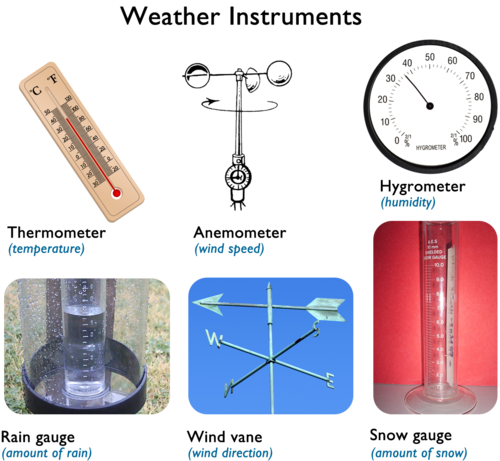Ever wondered how the weather conditions are forecasted, and how the predictions are done correctly about the future? Well, the meteorologists make use of a variety of weather instruments for measuring the weather conditions. In this article, you will find information on the various weather instruments and their uses. While there are many common instruments, like thermometer, which measure the temperature in Fahrenheit and Celsius, there are also various other instruments available.
Check Out these Weather Instruments and Their Uses
Thermometer:
The thermometer can measure low and high temperatures in degrees of Celsius and Fahrenheit. These give the exact temperature in that place.
Barometers
The barometers are useful in measuring the atmospheric pressure. They provide the measurement in the form of milli-bars. When the pressure is high, it means that the weather is sunny, and when the pressure is low, it means that it is going to rain. There is also a microbarograph, which measures the air pressure, and records it in the form of continuous measurements on the paper.
Hygrometers
Hygrometers measure the humidity and temperature by using the Celsius and Fahrenheit. A kind of Hygrometer, which is also known as the sling psychrometer, makes use of a dry and wet bulb thermometer for measuring the relative humidity.
Anemometers
The Anemometers are used for measuring the speed and direction of the wind in mph, or miles per hour. The anemometer usually has three cups, which are fixed on the mobile shaft. When the wind blows fast, it makes the cups to spin around faster, and the dial shows the actual speed of wind.
Wind Vane
The wind vane is also known as the wind sock. It helps in measuring the wind direction at a particular point of time. There is a weighted arrow, which spins on the fixed shaft. This arrow points towards the north, east, south and west.
Rain Gauge
The rain gauge helps in measuring the actual amount of rainfall. There is a long and a narrow cylinder, which can measure the rainfall up to almost 8 inches. The gauge also measures the precipitation in mm.
Hail Pad
The hail pad is useful in measuring the size of the hail, which falls during storms. The hail pad consists of an aluminium foil and florist’s foam. When the hail falls on the foil, it ends up creating dimples, which can be helpful in measuring after the storm.
Campbell Stokes Recorder
The Campbell Stokes recorder is used for measuring the sunshine.
Well, these were some of the weather instruments and their uses. Depending upon the requirements, any or all of the weather instruments can be used.

